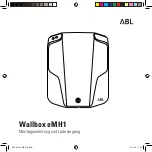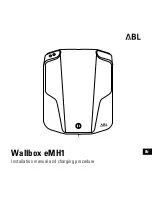
127
Wheels and tires
Glossary of tire terminology
The tire suppliers may have additional
markings, notes or warnings such as standard
load, radial tubeless, etc.
Glossary of tire terminology
Tire information placard:
A placard
showing the OE (Original Equipment) tire
sizes, recommended inflation pressure, and
the maximum weight the vehicle can carry.
Tire Identification Number (TIN):
A
number on the sidewall of each tire
providing information about the tire brand
and manufacturing plant, tire size and date
of manufacturer.
Inflation pressure:
A measure of the
amount of air in a tire.
Standard load:
A class of P-metric or
Metric tires designed to carry a maximum
load at 35 psi [37 psi (2.5 bar) for Metric
tires]. Increasing the inflation pressure
beyond this pressure will not increase the
tires load carrying capability.
Extra load:
A class of P-metric or Metric
tires designed to carry a heavier maximum
load at 41 psi [43 psi (2.9 bar) for Metric
tires]. Increasing the inflation pressure
beyond this pressure will not increase the
tires load carrying capability.
kPa:
Kilopascal, a metric unit of air
pressure.
PSI:
Pounds per square inch, a standard
unit of air pressure.
B-pillar:
The structural member at the side
of the vehicle behind the front door.
Bead area of the tire:
Area of the tire next
to the rim.
Sidewall of the tire:
Area between the
bead area and the tread.
Tread area of the tire:
Area of the
perimeter of the tire that contacts the road
when mounted on the vehicle.
Rim:
The metal support (wheel) for a tire
or a tire and tube assembly upon which the
tire beads are seated.
Maximum load rating:
a figure indicating
the maximum load in pounds and kilograms
that can be carried by the tire. This rating is
established by the tire manufacturer.
Maximum permissible inflation pressure:
the greatest amount of air pressure that
should ever be put in the tire. This limit is
set by the tire manufacturer.
Recommended tire inflation pressure:
inflation pressure, established by Volvo,
which is based on the type of tires that are
mounted on a vehicle at the factory. This
inflation pressure is affected by the number
of occupants in the car, the amount of cargo,
and the speed at which the vehicle will be
driven for a prolonged period. This
information can be found on the tire
inflation placard(s) located on the drivers
side B-pillar or on the inside of the fuel
filler door on Canadian models, and in the
tire inflation table in this chapter.
Cold tires:
The tires are considered to be
cold when they have the same temperature
as the surrounding (ambient) air. This
temperature is normally reached after the
car has been parked for at least 3 hours.
Summary of Contents for 2006 XC70
Page 1: ...2006 ...
Page 4: ......
Page 8: ......
Page 54: ...46 ...
Page 86: ...78 ...
Page 142: ...134 ...
Page 182: ...174 ...
Page 208: ...200 ...
Page 209: ...201 ...
Page 210: ...202 ...
















































